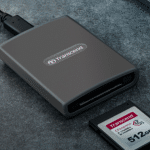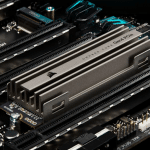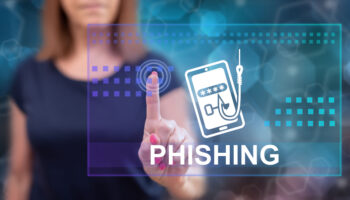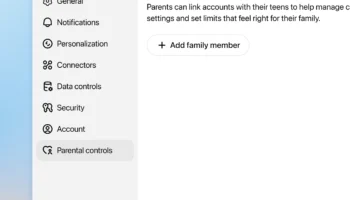Transcend launches CFexpress 820 Type B memory card and USB reader

If your camera only uses SD cards, you are basic AF. Look, there is nothing wrong with being basic -- I am definitely in that group. However, if you are a hardcore photographer with high-end equipment, your storage should be CFexpress (Type B, particularly) if your camera supports it. Why? It is insanely fast, as it uses the PCIe interface. And yes, speed matters when you need to transfer a lot of photos or videos.
Of course, the downside of these new faster cards is they are more expensive. Thankfully, value-focused company Transcend has launched a new CFexpress 820 Type B Memory Card that is available now. In addition, the manufacturer has released the new RDE2 USB CFexpress card reader.
How to onboard new starters in the COVID-era

COVID-19 has completely transformed the way we work. As the rapid spread of the virus forced the UK Government to impose a national lockdown on March 23 2020, businesses across the country were forced overnight to operate remotely. Indeed, many employees have not worked in a traditional office setting for almost one year.
In most cases, workforces have successfully acclimatized to this 'new normal'. Communication platforms such as Zoom and Slack have reigned supreme, ensuring that teams are able to communicate on a daily basis with little hindrance to their performance.
The impact of COVID-19 on modern retailers

There is no doubt that the coronavirus pandemic has changed the landscape of the retail sector. Social distancing regulations and civil anxiety surrounding the virus mean that physical stores do not offer the same browsing experience as we would usually expect. Meanwhile, a growing reliance on online shopping has been boosted by instructions to remain at home as much as possible.
The impact of COVID-19 and our new shopping behaviors have a profound effect on retailers. Changed buying experiences, falling and rising sales, and new consumer demands have defined an adverse year in retail. Here, we look at how customers and businesses have been affected by these changes.
0patch fixes major Windows Installer bug before Microsoft

Waiting for Microsoft to issue patches for bugs that have been discovered in its software can mean having to be very patient -- some updates just seem to take forever to appear. More than this, the bug fixes can introduce new problems of their own, so it's little wonder that third-party patching services such as 0patch have grown in popularity.
And once again, 0patch has managed to beat Microsoft in releasing a patch for a serious vulnerability. The company's latest patch addresses a local privilege escalation 0day in Windows Installer, and it's available well ahead of Microsoft's official fix.
Microsoft releases Windows Terminal 1.6 Preview complete with new Settings UI

It is only a few days since we let you know about an aesthetic change coming to Settings in Windows Terminal. Now the big day has arrived, and Microsoft has released version 1.6 of its powerful and versatile command line tool.
Windows Terminal 1.6 Preview is the first update to see the light of day in 2021, and while the new UI for Settings is the big news, there are plenty of other improvements as well.
2021 Prediction #3: Get ready for more GameStops as hedge funds are no longer the only bullies in town

Today is my birthday. Thirty-five years ago today I was drinking coffee in my Palo Alto kitchen when the Space Shuttle Challenger exploded on TV. Thirty years ago today my father fell over, instantly dead of a heart attack while walking between gates in the American Airlines terminal at DFW. I was expecting a call, just not that one. Life is full of surprises and some of them aren’t good, as hedge funds are learning this week while their fortunes are determined by millennial traders in shares of GameStop, the venerable video game retailer. This is all part of the new normal.
Day Trading of stocks and options was a big deal during the dot-com era 25 years ago. "Traders" intent on closing-out their positions at the end of each day would hype this stock or that on Internet discussion boards, counting on artificial volatility and good timing to both buy and sell (or sell and buy) before the other guy -- one trader against the world. That’s NOT what is happening here with GameStop, AMC, Bed Bath & Beyond, Blackberry, etc. This is coordinated action of thousands of traders toward a specific and guaranteed profitable end.
Best Windows 10 apps this week

Four-hundred-twenty-three in a series. Welcome to this week's overview of the best apps, games and extensions released for Windows 10 on the Microsoft Store in the past seven days.
Microsoft published a workaround for the Conexant ISST audio driver issue in Windows 10 this week. There is also a third-party patch for the drive-corrupting Windows 10 issue.
Disney+ is bringing back The Mighty Ducks

Disney+ has been a huge success, thanks in part to original content like The Mandalorian, Mulan, Soul and, most recently, WandaVision.
Now the media and theme park giant is announcing the return of The Mighty Ducks. Although based on the movie from 30 or so years ago, this time around it's going to be a TV series.
CORSAIR launches MP600 CORE and PRO M.2 PCIe Gen4 NVMe solid state drives

Solid state drives are one of the best computing innovations in years, as they provide a huge performance boost without breaking the bank. By simply upgrading from a mechanical hard drive to an SSD, your computer will feel brand new. Best of all, SSD manufacturers are not resting on their laurels, but instead, continually pushing performance boundaries.
Currently, PCIe Gen 4 NVMe SSDs are all the rage with enthusiasts, and today, CORSAIR launches two new models -- the MP600 CORE and MP600 PRO. There is even a "Hydro X Edition" variant of the latter, which utilizes water-cooling to reduce temperatures.
Business mobile app use up by 200 percent

A switch to remote working has resulted in a 200 percent surge in the use of business-related mobile applications and a 25 percent boost in mobile device screen time compared to the previous year.
A new report from reimbursement solution Motus also shows many professionals resorted to using mobile hot spots to offset the strains that reduced home internet speeds, which contributed to a near 20 percent spike in mobile data traffic.
Poor remote endpoint visibility puts organizations at risk

Most organizations have a severe lack of visibility into remote endpoints according to a new report, which poses additional risks as more people work from home.
In addition, few have a way to stop ransomware from spreading throughout their network after an initial breach, according to the study from zero trust specialist Illumio.
Consumers worry about privacy but don't want to change their habits

A survey released to coincide with Data Privacy Day reveals that although 80 percent of consumers are concerned about their data privacy, few are willing to change their habits.
The study from Entrust, based on responses from 500 adults in the US and 500 in the UK, shows 64 percent of consumers are willing to some degree to share personal information with an app in exchange for more relevant, personalized and/or convenient services.
International law enforcement effort takes down Emotet from the inside

Law enforcement authorities in the Netherlands, Germany, the US, the UK, France, Lithuania, Canada and Ukraine have collaborated to disrupt Emotet, one of the most significant botnets of the past decade.
The effort, coordinated by Europol the joint European policing agency, gained control of the Emotet infrastructure and took it down from the inside. Infected machines of victims have been redirected towards this law enforcement-controlled infrastructure.
Set aside some extra time, Sling DVR Plus space quadruples

If you’re an avid Sling user then you likely pay the extra $5 per month for the cloud DVR Plus service. It works like any other DVR, except recordings just aren’t on your hard drive. The TV service has been providing this for a couple of years and it’s been a big frustration for many users because the limit was a bit stingy.
No longer -- the company has upped the space in a big way and, if you haven’t already, you’ll be getting a notification the next time you sign in.
Industry expert views for Data Privacy Day

Depending on who you talk to today is either Data Privacy Day or Data Protection Day. But whatever you want to call it the idea is to focus attention on the importance of best practices for looking after sensitive information.
In the current environment with distributed workforces and more transactions taking place online, this is more important than ever. We've rounded up opinions from some leading industry figures on the current state of data privacy and what can still be improved.
Most Commented Stories
BetaNews, your source for breaking tech news, reviews, and in-depth reporting since 1998.
© 1998-2025 BetaNews, Inc. All Rights Reserved. About Us - Privacy Policy - Cookie Policy - Sitemap.




